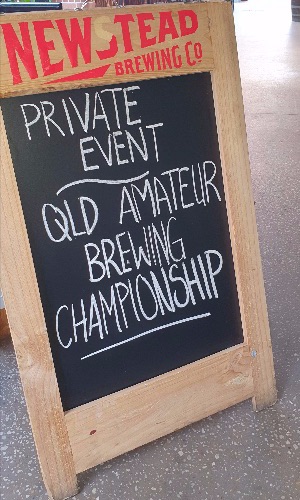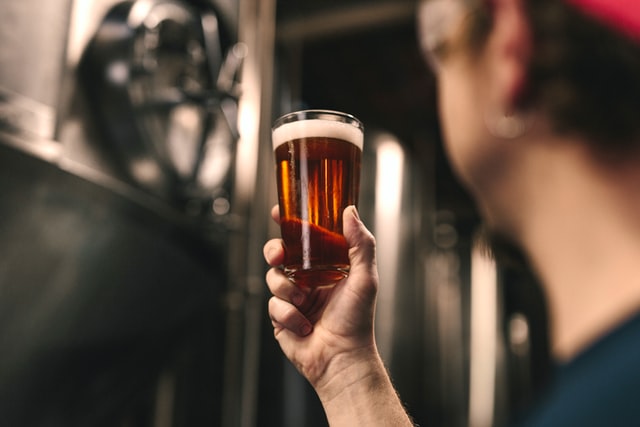by Tony Van Der Linden

Our Club’s annual competition was judged again back on Saturday 6th July. The folks at Ballistic Brewing at Salisbury were kind enough to host us on judging day for the second year now. We did notice the space felt a little smaller this time, with perhaps half a dozen new fermenters gracing the warehouse floors and a freshly brewed Imperial Stout frothing madly in the corner. I think that stout is going into barrels so look out for it in the future.

Entry numbers were up on the last few years with 89 beers entered across our 9 traditional categories. We’d learned a few things from the running of last year’s competition and put in a few extra hours in the week before to get even more organised and ensure smooth running on judging day. From the comments from stewards especially, it seems like these changes did make appositive difference, and everything did feel like it went smoothly.


American Ales and the Stouts and Porters categories were again very popular and showing that folks continue to love drinking and brewing a good Pale Ale, IPA or Stout. A few other categories were on the small side this year with Wheats, Pale and Bitter, Amber and Dark, and Strong Ale all a bit on the small side. When this happens, we won’t necessarily award all 3 placings. Belgian and Farmhouse and the Specialty categories had some very interesting beers and high quality too.
One of the most pleasing things this year was to see the spread of brewers across the placings, with 18 different names across the 22 placings awarded. To me this means that the quality across the club has really increased and evened out, and this makes for some great competition in the top trophies. Best of Show was a pleasure to judge again with 9 beers being put forward, an excellent top 3, and a worthy unanimous winner. Overall the quality was good, with three-quarters of the entries scoring more than 25pts and just under half the entries getting a Bronze medal or better (35pts+).
At the other end of spectrum a variety of faults were called out, with the worst (ie having the biggest negative effect on your beer) seeming to be related to fermentation and packaging. In this area the problems were generally poor attenuation, or off or inappropriate flavours (phenols, acetaldehyde, solvent) which are typically problems with yeast health and/or quantity. If you have a problem with this try doing some calculations on how much yeast is required for a given ferment. Also think about your pitching and fermenting temperatures.
In just a few cases, full on infections were called out, which are instances of bacteria gaining a foothold in your beer. Cleaning and sanitation are the key here. A healthy yeast pitch will also reduce risks here.
The other most common fault was oxidation/oxidisation, which leaves your beer tasting a bit like wet cardboard or sweet sherry at worst, but maybe just results in dull flavours and a tired, old tasting beer. Whilst Oxygen is essential to yeast health at the start of fermentation, it’s an absolute killer for a fermented beer. For a homebrewer, Oxygen typically gets into a beer during transfer from fermenter to keg, or when packaging to bottle from keg. There are a few methods to reduce Oxygen ingress at these points, so ask around and do some research.
This transfer to bottle from keg is potentially also the cause of another common fault, albeit a stylistic one, in lower scoring beers this year – lack of carbonation. Assuming that a beer was adequately carbonated in the keg it is possible that pressure and carbonation is being lost during transfer and capping. To compensate for this you could try:
- slightly over-carbonating a beer for transfer;
- transferring at higher than serving pressure;
- ensuring that beer, bottles and equipment are cold for the transfer;
- and transferring as late as possible, as PET bottles are ultimately permeable (see also Oxidation!).

Other issues with the beers tended to be more connected with recipe creation and stylistic interpretation. Beers in this group will often still score well but fall short of a placing or being considered “excellent”. The common remarks here were about hopping and the use of speciality malts. These components are often the main contributors to the style hallmarks of a beer. As such they greatly affect the impression of a beer. Too little hopping is a critical error in an IPA or APA, but too much is no good for a American Wheat. Too much specialty malt will hurt a German Pilsner but too little will make a Stout or American Amber seem lacklustre. Try to get very familiar with the BJCP guidelines of your favourite brewing styles and understand the difference and impact that say, medium hopping compared to high hopping, makes on the flavour and impression of balance in a beer.

A massive thanks to David and Lachie at Ballistic as well as the rest of the brewing and bar staff for their support and hospitality, particularly Hannah for opening early for us. A big cheers to our competition prize sponsors who continue to support the club year after year. Thank you also to all those BABBs and PUBS club members who assisted with judging and stewarding on the day, and really do make the competition possible. And lastly a big pat on the back to my fellow organiser Anthony “Ziggo” Zigenbine who each year wrangles the open source software we use to run the competition and makes things easier to manage.





